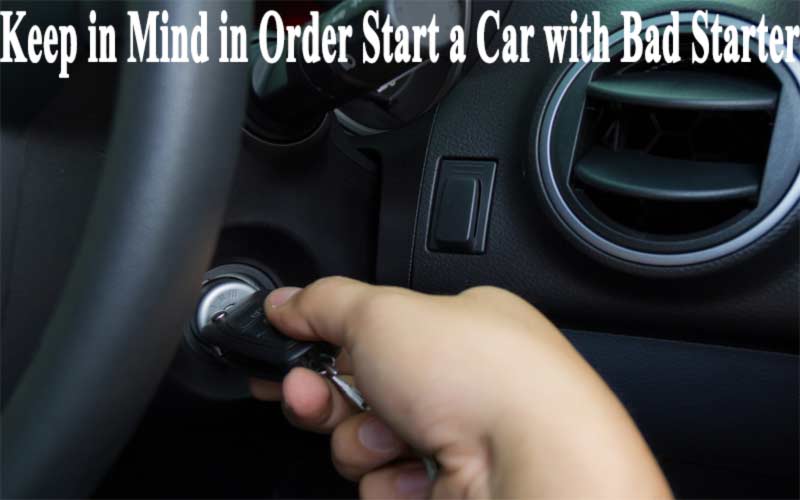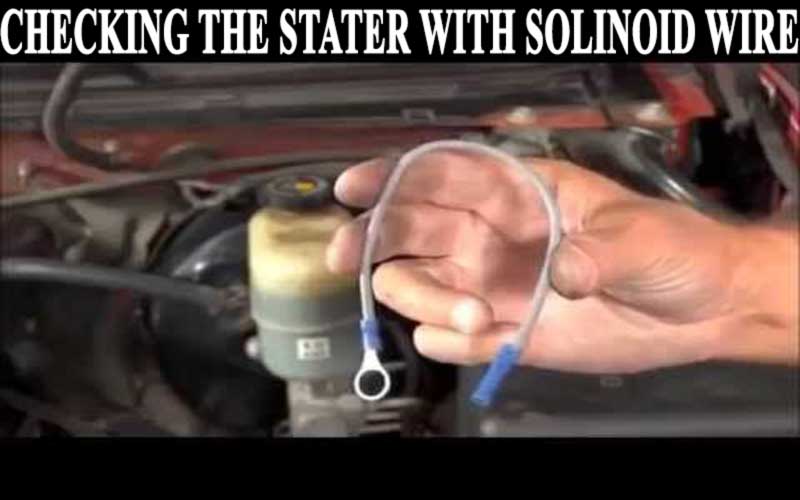How to Start a Car with Bad Starter – Easy Solution
Among all the car-related problems, the bad starter is very common and really irritating. That being said, since now Electric and hybrids vehicles are coming in, the bad starter problem won’t be lasting long. But for that, we have to wait till all the cars convert into electronic.
However, if you own a car and usually drive, then knowing how to start a car with a bad starter is mandatory for you. If you don’t want to end up sticking the middle of nowhere. You should at least learn a bit so that you can roll your vehicles to the repair shop.
And in this below guide, we are going to tell you how exactly you can start a car with a bad starter. There is nothing complex, just a few tricks that you probably didn’t hear of. Go through the below guide, in the end, you should learn to start a car with a bad starter.
Things to Keep in Mind in Order Start a Car with Bad Starter
Before we roll down to the steps, let us tell you something mandatory. Do you what a starter needs to perform its job? To start a car from a bad starter, knowing how starter actually works is very important. A starter requires three things to perform.

First, battery sending a positive current to the starter. Second, Current coming from the ground. And lastly, Positive current coming from the starter relay to the starter solenoid. When a car having a bad starter, doing these three things manually will have you start the car.
However, let’s dive into details now!
Checking the Connection
When you are having a bad starter day, the first thing you would want to check is the connections. For starter what matters the most is the positive current from the battery.
So check the connections between the battery and the starter. And ensure they aren’t loose. Because of loose connection starter doesn’t get needed amps and hence it doesn’t work.
Look at the battery terminal connectors, and if you find them loose, with a ratchet try to tighten them. If you see everything on the right spot, follow the positive wire.
Normally, from the battery positive wire splits into two, one goes right into the alternator, and another on the starter. Go with the wire that goes to the starter, and shake that up a bit and check if it is tight enough.
When you find everything right, try to bypass the positive wire from battery to starter by a jumper cable. And yes, the car key should be turned to start position during the whole procedure of using jumper cable.
Checking the Starter Solenoid Wire
Do you know what turns on the starter? The positive and the ground wire! But they don’t engage the starter with the transmission. What does that is the solenoid? When starting the engine, if you hear the starter turning free, there is a high chance that the problem is in the solenoid.

There should be a very small wire connected to the starter and check that wire for dirt and rust. If you see dust and rust, try to clean them or best would be to replace the wire.
However, to start, you need to do bypassing. In order to bypass the starter solenoid’s wire, you have to provide a 12v current directly from the battery to the solenoid connection, you will have to use a small wire. And when connecting the jumping wire you must hear a click sound.
Read More: Tips of Starting a Car with Bad Fuel Pump
Checking for Corrosion
Corrosion is one of the greatest enemies of electrical conductivity, this creates a lot of pretty irritating issues. And it is another big reason for a bad starter. Check the battery terminals and make sure they are free from acid deposit and corrosion.
If you see any of them, you need to clean them as soon as possible. But remember, when cleaning a dirty battery all the connectors should be disconnected. And then use sodium bicarbonate with water and then pour on the battery terminals. Let it sit for 5 to 10-minutes and then rinse with hot water.
Tapping with a hammer
This is the oldest trick, tapping on the outer frame of the starter with a hammer. You go to any old school mechanic, they will suggest that. This trick used to work, actually, it works now as well.
Let us tell you how tapping thing actually works, old starters tend to create dead spots within the field coils and the armature and that is what causes the intermittent issues.
And tapping on the starter with a hammer makes the armature spin enough to get the engine started. But now most of the cars are coming with the transversal engine which is different from the old engines.
In this transversal engine, the starter is located behind the engine. To be more accurate, it is placed between the firewall and engine. That makes impossible to reach there with a bare hand, let alone a hammer.
However, one thing you can still do is, find a ratchet extension bar or a prybar. And the try to reach to the starter and then tap. This works sometimes, if you are lucky then it might get your job done.
Pushing the car
This trick will only work when your car is on a manual transmission. When all the trick fails, this one might save you. You are going to new assistance, ask two people to help you push the car, if they are kind enough they would do it. Keep the key on run position and keep the car on 1st gear. And obviously, keep the clutch pressed down.

Now tell your people to push the car and when you reach 5-10MPH, immediately release the clutch. This should start your vehicle. And once it gets started, stop it directly to the repair shop. Otherwise, you will have to push it again.
Conclusion
By now you should know how to start a car with a bad starter. These tricks work pretty fine, except the tapping hammer one. Hope this helps!

